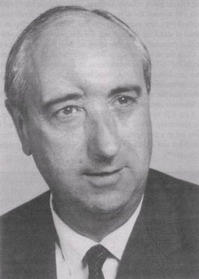


History of Research in the Bureau of Meteorology
Foreword
Preface
Introduction
Chapter 1: Germination and Growth
Chapter 2: Struggle, Competition and Emergence
The Struggle for Recognition
International Involvement
Local Cooperation
The Bureau Goes Solo
Conclusion
Retrospect
Appendix 1: Meteorology Act 1906
Appendix 2: Meteorology Act 1955
Appendix 3: Simpson Report
Appendix 4: Survey Questionnaire
Appendix 5: Bibliography
References
Index
Search
Help
Contact us

Negotiations commenced in November 1945, under the auspices of the CSIR's Atmospheric Physics Research Committee, and agreement was eventually reached on a division of responsibility between the two government organisations and Loewe's research department. This saw the Bureau given the areas of research into applied meteorology, climatology and systems development, whilst CSIR, and subsequently CSIRO, took responsibility for fundamental research into atmospheric physics (Zillman [93]).
The tasks allocated to Loewe's group were the provision of "theoretical and post-graduate training in meteorology and refresher courses for meteorologists's as well as research in the field of aeronautical meteorology" (Zillman [93]). This work was in addition to that of the proposed new Seasonal Forecasting Unit which Warren was still busily supporting on its path through the bureaucracy. It finally received government approval in August 1946, much to the Vice Chancellor's delight (Medley [57]).
In March 1946 Warren visited London and whilst there met with the newly selected Officer-in-Charge of the CSIR's Meteorological Physics Section, Dr C. H. B. Priestley, and promised his full support for the new venture. However, when faced with the possible loss of his best staff, Warren declined to allow such a move to take place (Priestley [65]) on the understandable grounds that he could not afford such a loss, thus setting the tone for future relations between the Bureau and CSIR, and later the CSIRO.

Another difficulty arose when Priestley suggested a change in the method of analysing upper air charts. Relying on his British experience he proposed that Bureau staff adopt a level-by-level approach based on thickness patterns instead of their current system of treating each level on its merits. Priestley believed that his ideas would reduce the number of errors in the analysis and prognosis of upper air systems but Bureau analysts preferred to continue with their own less holistic methods instead. It would be difficult not to believe that such petty disagreements did not contribute to an overall feeling of mutual disrespect between the two organisations. It should also be noted that Priestley's approach was eventually adopted by the meteorologists, thereby perhaps increasing his general sense of frustration with the Bureau.
These disputes set the foundation for an ongoing rivalry which has continued to the present day, albeit to a lesser degree, although attempts are currently underway to restore the relationship to a more cooperative and scientifically productive level.
People in Bright Sparcs - Loewe, Fritz; Priestley, Charles Henry Brian (Bill); Warren, Herbert Norman
 |
Bureau of Meteorology |  |
© Online Edition Australian Science and Technology Heritage Centre and Bureau of Meteorology 2001
Published by Australian Science and Technology Heritage Centre, using the Web Academic Resource Publisher
http://www.austehc.unimelb.edu.au/fam/0767.html